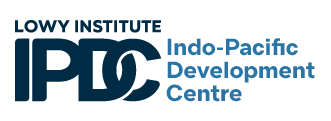As said of tastes in clothes or music, fashion trends always come back into vogue. So too, it seems, with conventional wisdom on international capital flows. After years allowing money to slosh freely around the international system with faith in the role of free markets, opinion is gradually returning to somewhere near the starting point of the modern international economic system; that capital flows, for all their benefits, can be volatile and damaging, especially to fragile emerging economies.
At the 1944 Bretton-Woods conference, which created the International Monetary Fund and the World Bank, J.M. Keynes and Harry Dexter White differed on many things. But the two leading economists of the age agreed that short-term capital flows could easily undermine fixed exchange rates, which were the fulcrum of the new international economic order. The IMF Articles contain a specific provision for policymakers to restrain the disruptive rush of cash.
By the 1970s, however, this fixed-rate system was falling apart. The Organisation for Economic Cooperation and Development was encouraging advanced economies to welcome capital flows, fostering investment and the transfer of technology. The first oil crisis also encouraged US banks to “recycle” Middle-East petroleum wealth to emerging economies, particularly Latin America.
There followed the first of the crises which have characterised the danger of easy money for emerging economies. Latin America was the hardest-hit, ushering in a “lost-decade” of low growth. The easy availability of funds facilitated the “Pertamina Crisis” in Indonesia, where the state-owned petroleum company speculated $10 billion on second-hand oil tankers, and lost (those were the days when a billion dollars was a lot of money).
Despite a second Latin American debt crisis (also triggered by oil-price increase) shortly after the first had been resolved, the IMF added its weight to the proponents of free-capital movements.
The high point of its advocacy was the IMF proposal in 1997 to re-write its Articles so that capital flows had the same status as free trade, with a strong presumption that there would be no constraints. By astonishing mistiming, this proposal coincided with the disaster of the Asian financial crisis which had, in large part, resulted from excessive inflows into Asian embryonic “tigers” in the early 1990s. The amendment died.
Nevertheless, IMF enthusiasm for free capital flows was undiminished, at least until the 2008 global financial crisis. One element that had fuelled the economic meltdown was inflows of cash from European banks into US sub-prime mortgages – the risky financial instruments at the heart of the crisis. The US Federal Reserve had to lend $500 billion of US dollar-denominated swaps to European central banks to bail out local banks.
This was closely followed by the Euro crisis, with epicentre in Greece, which could not repay its euro-borrowings.

Perhaps all this turmoil shifted the IMF’s attitude to capital flows. Its 2012 Institutional View saw a role for some constraints on some capital flows in a limited range of circumstances. The Integrated Framework in 2020 clarified these circumstances.
Meanwhile the best-managed emerging economies (mainly in Southeast Asia) had quietly made their own policy adjustments to excessive short-term capital inflows. After the traumatic experience of the “taper tantrum” in 2013, reprised in 2015 and in 2018, they found ways of coping with inflows: intervention in their exchange rates and various flow constraints – all breeching IMF doctrine. The Fund turned a blind eye: these infractions were clearly working well for the recipient countries.
The return journey all the way back to 1944, when the IMF explicitly recognised the need for short-term capital flow constraints, is not yet complete. But for all practical purposes any emerging country which wants to impose restraints on capital flows will face only muted opposition from the IMF. Those with long memories might derive some nostalgic pleasure from the discussion, revived after half-a-century, of the “Tobin Tax” – a small transaction-based payment which would restrain short-term flows while not affecting longer-term inflows.
Throughout this transitional period, there was a ginger group within the IMF which was attempting to shift the institution more quickly, with the implicit support of chief economist Olivier Blanchard. They wrote widely and persuasively, both within and outside IMF channels.
The various aspects of this journey have been brought together in a single issue of the Oxford Review of Economic Policy, and is also the subject of a recent seminar at the Peterson Institute. Notable are papers from Jonathan Ostry (perhaps the most prominent of the IMF’s internal rebels, now at a US university), Chatib Basri (former Indonesian finance minister) and Barry Eichengreen, doyen of international economic history.
Academia – together with Wall Street – have been strong proponents of unrestricted capital flows and “efficient markets”, retarding IMF evolution. But the message from this group of scholars and practitioners is clear: there is still further to go before IMF policy is actively supportive of those emerging economies which see the need for restraining volatile short-term capital inflows. What is still missing is an unambiguously positive attitude from the IMF, which could offer practical operational advice from its wide-ranging experience on just what capital-flow management work best.


